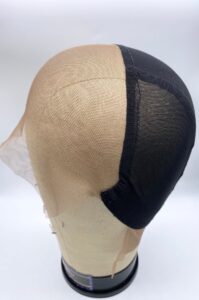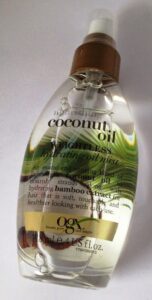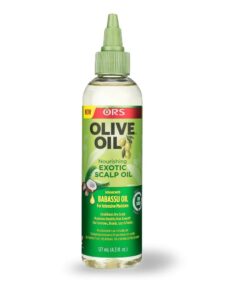WIG
Protecting Natural Hair While Wearing Wigs
Wearing wigs can be a convenient, fun, and stylish way to change up your look, but it's important to make sure you're properly caring for your natural hair underneath. Exposing your natural hair to the friction, heat, and moisture changes that come with wearing a wig can lead to a host of issues, including dryness, breakage, and even thinning, if you're not proactive about protecting it.
In this comprehensive blog post, we'll explore a variety of tips, strategies, and best practices for keeping your natural hair healthy and thriving while you enjoy the versatility of wigs. Whether you're a seasoned wig-wearer or just starting to experiment with them, these techniques will help you maintain the integrity of your natural hair and prevent any unwanted damage.

Preparing Your Natural Hair
Before you even put on a wig, it’s crucial to properly prepare your natural hair to create the best foundation for a healthy wig-wearing experience. Start by thoroughly cleansing your hair and scalp to remove any product buildup, dirt, or excess oil that could interfere with the wig’s fit and cause irritation.
Once your hair is clean, it’s time to condition it deeply. Use a rich, moisturizing conditioner or a deep conditioning treatment to strengthen, soften, and hydrate your strands. This will help them better withstand the friction and potential drying effects of wearing a wig.
After conditioning, you’ll want to style your natural hair in a way that will provide a smooth, flat base for the wig to sit on. Braiding, twisting, or banding your hair into a low-maintenance style can help minimize tangles and reduce the risk of breakage. Avoid hairstyles that are bulky or raise the wig too far off your head, as this can cause discomfort and contribute to hair damage.
Choosing the Right Wig Cap
The wig cap you use can make a significant difference in how your natural hair fares under the wig. Look for a wig cap made of a breathable, non-irritating material like lace or satin. Avoid caps that are too tight, as this can restrict blood flow to your scalp and lead to tension, discomfort, and breakage over time.
If you have a delicate or fragile hairline, you may also want to consider using a wig with a lace front. Lace front wigs allow you to blend the wig seamlessly with your natural hairline, minimizing any visible lines or edges that could cause friction and damage.

Maintaining Moisture and Hydration
One of the biggest challenges of wearing wigs is keeping your natural hair properly moisturized. The wig can create a warm, humid environment that can quickly dry out your strands, leading to brittleness, split ends, and other issues.
To combat this, be sure to use a lightweight, leave-in conditioner or serum on your natural hair before putting on the wig. You may also want to apply a light oil, such as argan or coconut oil, to the ends of your hair to seal in moisture and prevent breakage.
Additionally, try to give your hair regular breaks from the wig to allow it to breathe and absorb moisture from the air. Aim to wear the wig for no more than a few days at a time, and take it off at night whenever possible. This will help your natural hair maintain optimal hydration levels and prevent any long-term dryness or damage.

Cleaning and Maintaining the Wig
Proper wig care is also crucial for protecting your natural hair. Be sure to clean your wig regularly, following the manufacturer’s instructions, to remove any built-up oils, products, or dirt that could transfer to your natural hair and cause clogged pores, irritation, or other issues.
When removing the wig, be gentle and avoid pulling or tugging, as this can lead to breakage and damage to your natural strands. Store the wig properly, such as on a wig stand or in a breathable wig box, to keep it in good condition for your next wear.

Scalp Care and Stimulation
In addition to caring for your natural hair, it’s important to pay attention to the health of your scalp while wearing wigs. The warmth and moisture created by the wig can sometimes lead to issues like itchiness, dryness, or even fungal infections if the scalp is not properly cared for.
To keep your scalp happy and healthy, try to gently massage it with your fingertips when removing the wig. You can also use a soothing, non-irritating scalp oil or serum to hydrate and nourish the skin. Additionally, be sure to give your scalp regular breaks from the wig to allow it to breathe and regulate its natural oils.

Wearing wigs can be a fun and versatile way to switch up your look, but it’s essential to take the necessary steps to protect your natural hair in the process. By properly preparing your hair, choosing the right wig cap, maintaining moisture and hydration, caring for the wig itself, and tending to your scalp, you can enjoy the benefits of wigs while keeping your natural hair healthy, strong, and thriving.
Remember, consistency is key when it comes to wig-wearing and natural hair care. Stick to a regular routine, listen to your hair’s needs, and make adjustments as necessary. With a little care and attention, you can rock your wigs with confidence, knowing your natural hair is being well-protected.




